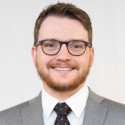The windows rattled as the heavy, gray metal door clanged open into our cramped study room, revealing a young woman clad in dark navy blue scrubs. Malika, a second-year medical student and classmate, skipped into the room positively beaming with joy. “Dr. M is THE BEST!” she exclaimed as she plopped her backpack down and excitedly began to recount her morning experience shadowing in the OR. For the next several minutes, my classmates and I sat in rapture as Malika described how she learned how to use a bovie, tie knots, and suture while operating one on one with Dr. M during an open nephrectomy. “It was the most I’ve ever been involved in the OR! And at the end, Dr. M made sure I got a picture of me holding the kidney to send to my parents!” There wasn’t a person in that overcrowded study space that wasn’t excited for, or envious of, Malika’s experience. The next week, three more of my classmates scheduled times to shadow Dr. M.
I oftentimes wonder if those endeavoring to teach medical students are aware of their immediate and sustained impact on the students in their care. How often do they hear about the commentary flowing between students in study rooms, lecture halls, and group chats? Given the climate of anonymous standardized feedback, how accurately are teachers of medical students able to dissect which strategies or activities are most impactful in the eyes of their students? With this in mind, I dug through my journal and talked to recently graduated medical students to discover what strategies students found to be most impactful as evidenced by their best attendings, fellows, and residents.
1) Authenticity, Intentionality, and Mentorship
The best teachers are genuinely engaged and intentionally interact with their medical students. A week before starting clinical rotations, my classmates and I were warned that faculty would be able to tell if we were genuinely excited to be on rotation or there to “check off a requirement.” We quickly found this to be true of the faculty and residents we would be working with as well.
On my first day in a new clinic, I stumbled across the work pod for the team I would be working with. Midway into my introduction, a boisterous voice interjected from the corner of the room and a large red-bearded fellow jumped out from his chair. “DUUUUDDEE, welcome!” his voice boomed as he came in for a quintessential “bro hug” before proceeding to learn my name and home institution and making sure I knew where to sit, how to be helpful, and who I should work with that day. While this sort of welcome may not land with every student, it was impossible to deny the genuine excitement for having me with the team. In the weeks that followed, I witnessed the same welcome ritual unfold as additional students arrived to work with the team.
Another student pursuing a career in surgery was impressed by the intention and mentorship displayed by a faculty member on her anesthesia rotation. On the first day of the rotation, this faculty member took over an hour to do nothing but talk with the medical student about their journey into medicine, experience in medical school so far, and what the student hoped to learn and accomplish during the rotation, in their career, and outside their career. While it is common to inquire what learners hope to accomplish in a rotation, this faculty member seemed to intentionally go above and beyond by honestly asking what the medical student was really about. “I felt incredibly comfortable talking to her [faculty attending] and felt supported in vocalizing what I really wanted.” The student would go on to match into a surgical specialty but recounts her anesthesia rotation as one of the most impactful and empowering rotations of medical school. Moved by the attending’s intentional interest in learning about their student, a mentoring relationship naturally developed and continues to this day.
2) Defining Expectations
For most medical students, clinical grading is the first high-stakes assessment within medical school. Those that do well situate themselves for entry into competitive residency programs. However, there are no commonly accepted standards for assigning clerkship grades and any process is vulnerable to imprecision and bias. Some schools have reacted to this dilemma by eliminating clinical grades or replacing them with a pass/fail system. The most impactful medical student instructors minimize the subjective nature of clerkship grading by implementing crystal clear expectations.
On my first day of working with Dr. V on my inpatient pediatric clerkship, I received a four-page document entitled “Team Expectations,” specifying in intricate detail the expectations of the fellows, residents, and medical students for the week. Objective criteria in six different categories detailed how medical students would be evaluated. For example, a medical student could ensure themselves the highest grade by asking insightful questions on disease management for every patient they follow, demonstrating knowledge of care for every patient on service, and taking “point” on patients as detailed in a daily task list. Further, students were expected to independently select and present research articles at least once per week. What's more, time and space were prepared to give the student the responsibility of care. In cases, medical students would round separately from residents so proper time and attention could be made to review assessments and plans.
3) Teaching Scripts
The best medical student teachers were well aware of what they had to offer students and how they planned to impart that knowledge prior to meeting students. Certain attendings appeared to have predetermined individual curricula consisting of teaching scripts, lessons, and teaching points deemed important for every medical student rotating with them to learn. For example, a surgical resident prepared an interactive PowerPoint presentation on the names and uses of common surgical instruments complete with an ANKI deck. Prior to daily rounds, an internist would review the most common diagnoses of common chief complaints with his medical students. An intensivist made a priority to review mechanism of action, side effects, and dose adjustments for every new medication a medical student proposed through a standard “chalk talk.”
4) Flexibility to Meet Individual Needs
In addition to providing predefined and prepared teaching scripts, masterful medical student educators are lauded by their pupils for their flexibility to meet student-identified goals. A common question asked to students at the beginning of clinical rotations is what they hope to accomplish during their time on service. Students take notice of those that go above and beyond to meet reasonable student goals. For example, on an EM rotation, one student identified suturing and ultrasound as their primary goals for the week. A student was impressed that their attending spoke with each resident and attending regarding the student’s goal, which resulted in increased exposure and hands-on experience. On a family medicine rotation, a student interested in surgery was impressed when the attending he was working with prepared an individualized slide deck on “What I wish every surgeon would know about primary care.”
In conclusion, the best teachers of medical students, as described by medical students, begin with authentic interest coupled with intentional interaction, are structured by crystal-clear expectations and developed teaching scripts, and end with flexibility to meet the goals of each student.
What does a good teacher look like to you? Share in the comments.
Christian Morrill is a research fellow at the Brady Urological Institute at Johns Hopkins studying management of urogenital congenital malformations. He enjoys bicycle trips, pottery, and exploring the Baltimore food scene. He is passionate about surgical education, innovation, and patient-centered care. He hopes his writing will spark resilience and empathy within himself, peers, and patients.
Illustration by Diana Connolly







